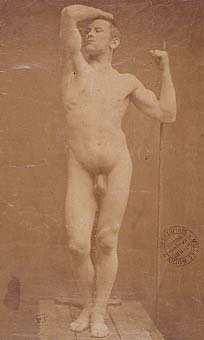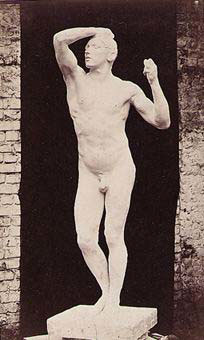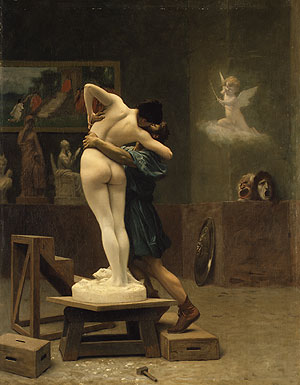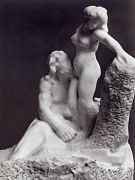H. de Roos - Rodin´s Approach to Art |
||||
|
3. A harmony parallel to Nature But if Nature and Art would be identical, the artist would be superfluous. Rodin knows this as well. After his Man with the Broken Nose, re-done in marble, was accepted at the Paris Salon in 1875, Rodin started to work on a standing male figure during his last years in Brussels.
|
||||
|
Jean-Léon Gérôme, Pygmalion and Galatea,
|
For the Belgian art historian France Borel, the artist produces a double of his model, his object of desire, so that he can possess it in a magical way. According to Plinius the Elder, the first sculpture would have been created by the daughter of a potter in Sykion. When her beloved was to leave her for a dangerous journey, she made a lamp cast a shadow of the young man against the wall, and drew a line around the silhouette; her father covered the portrait with clay and baked this model in his furnace, together with the other pottery. This way, the girl could preserve her lover´s presence, even after he was gone.
|
|||
|
|
|
|
Notice:
Museum logos appear only as buttons linking to Museum Websites and do not
imply any |
|



 For
Pygmalion, King of Cyprus, who desperately adored the perfect ivory statue he had carved, his
sculpture finally became alive. Rodin depicted the theme as well: the artist as the creator of
life - but a life that listens to its own law and obeys the particular rules of the medium in which it is produced.
For
Pygmalion, King of Cyprus, who desperately adored the perfect ivory statue he had carved, his
sculpture finally became alive. Rodin depicted the theme as well: the artist as the creator of
life - but a life that listens to its own law and obeys the particular rules of the medium in which it is produced.